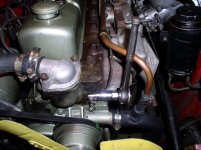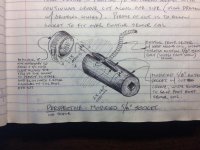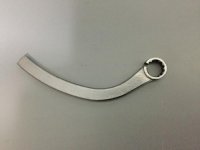,Hi all
I am going to recover the dash on my 1961 BT7. I assume the oil pressure gauge is a direct oil feed from the engine. What happens when I disconnect the feed pipe from the back of the gauge? Will there be a significant leak (with the engine off)? Am i right in thinking that the water temp sensor needs to be removed from the block before I can take the gauge out?
Is there anything else I should be ware of when removing the dash and recovering it?
Thanks
Phil
I am going to recover the dash on my 1961 BT7. I assume the oil pressure gauge is a direct oil feed from the engine. What happens when I disconnect the feed pipe from the back of the gauge? Will there be a significant leak (with the engine off)? Am i right in thinking that the water temp sensor needs to be removed from the block before I can take the gauge out?
Is there anything else I should be ware of when removing the dash and recovering it?
Thanks
Phil

 Hi Guest!
Hi Guest!

 smilie in place of the real @
smilie in place of the real @
 Pretty Please - add it to our Events forum(s) and add to the calendar! >>
Pretty Please - add it to our Events forum(s) and add to the calendar! >> 





